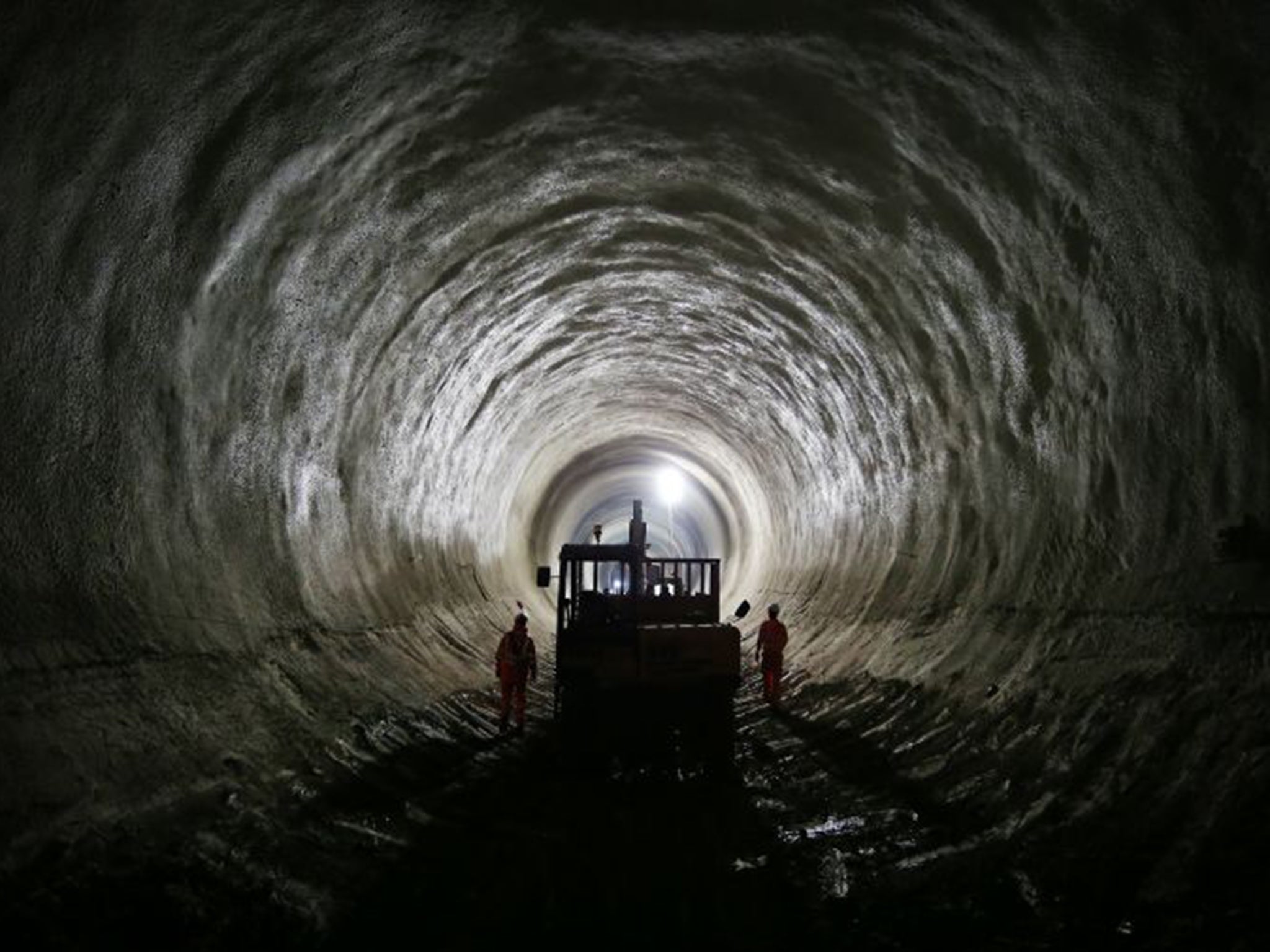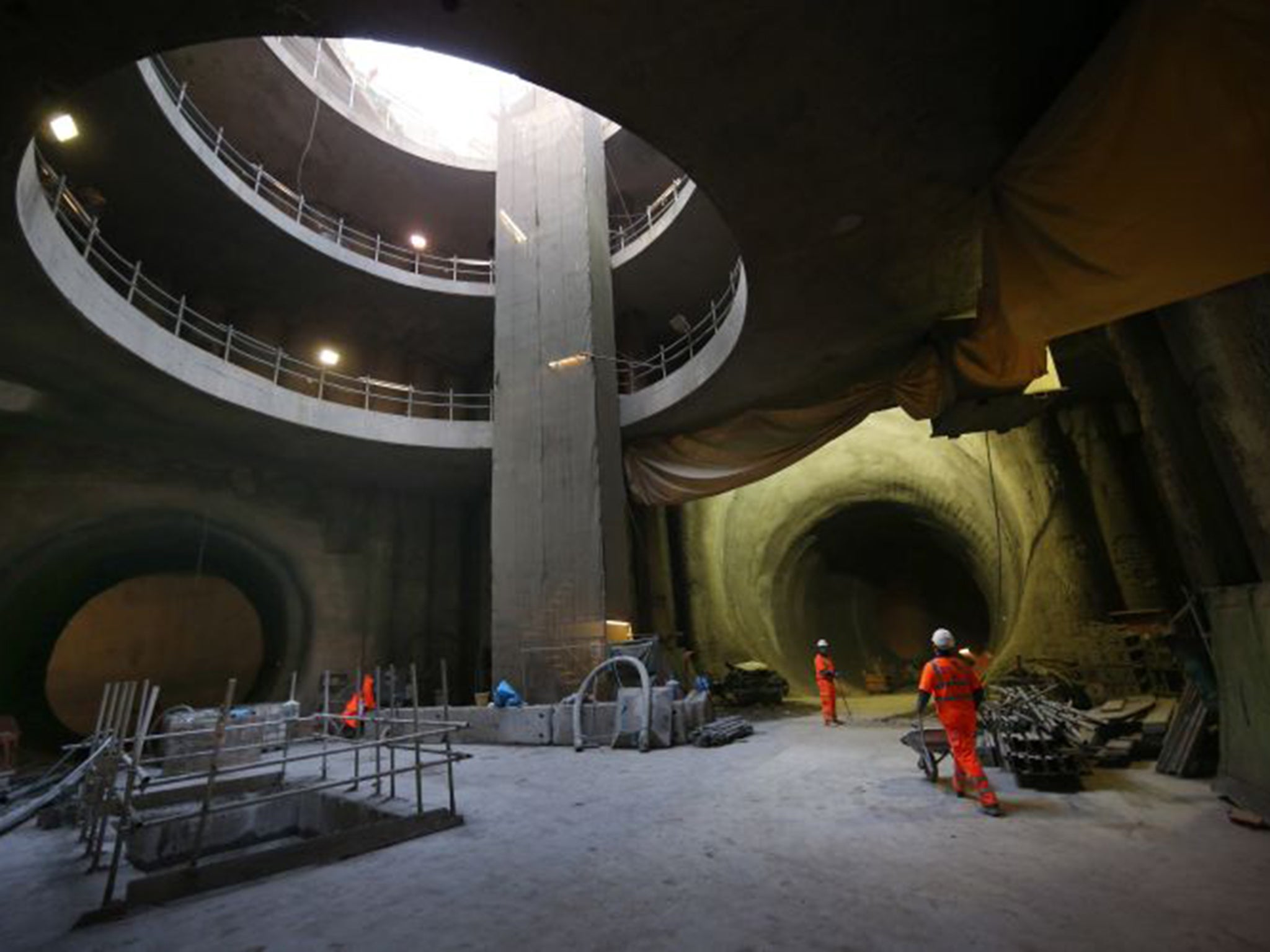Crossrail faces the prospect of signal trouble from day one
Engineers say the interface with the national rail network is causing problems and could even fail when new line opens

Crossrail, the South-East's £15bn new rail line, is on course for a humiliating signalling failure when it opens in 2018.
The project chairman, Terry Morgan, confirmed that a "mitigation plan" was being put in place as it grows increasingly likely that signalling on the 73-mile Berkshire-to-Essex link won't work properly. This would mean a reduction of train services from the start.
Crossrail uses a complicated mix of traditional metro signalling and state-of-the-art systems to link trains on the 26 miles of new tracks beneath London to existing major cross-country rail lines.
Engineers and rail experts are struggling to create "interfaces", meaning the trains are unable to smoothly switch from the relatively conventional Metro system to a higher-tech standard once they have left central London. Sources say with only three years to go these problems might not be resolved in time.
The heart of Crossrail is essentially a new underground system, running through notoriously busy Tube stations such as Bond Street and Tottenham Court Road. But Network Rail, the state-backed body in charge of the UK's most important train tracks, is looking to introduce a highly sophisticated signalling system across the railways, which will link with Crossrail.
This incorporates technology similar to GPS, providing pinpoint accuracy on a train's location, so that more than one train can stop and start on any single section of the railway without fear of crashing. The exact positioning means it should also be easier to manage and increase the flow of Crossrail trains into London. Crossrail, Europe's biggest construction project, is initially scheduled to run 24 trains an hour during peak periods, although the plan is to increase this to 30.

But signalling systems are notoriously difficult to get right when even simple lines open. Connecting two very different systems is even trickier and Crossrail directors are developing back-up plans.
"We are planning to have a mitigation programme in place if necessary," Mr Morgan said. "This is one of the technical challenges that Crossrail brings with it."
It is understood that the major issue is to the west of London, once the line passes through Paddington station. Industry sources believe the issue has become more troublesome since Network Rail separately launched its "digital railway" programme last year, which means introducing advanced technology, such as software that accurately forecasts temperature and rainfall across the country's major lines.
A source who has recently worked on Crossrail said: "The most likely scenario is that Crossrail will open with a significantly reduced service." A second source close to the project said: "In the extreme you wouldn't be able to run any trains. Signalling technology in this industry is something that has challenged everybody for a very, very long time."
Overall, Crossrail has been a surprisingly stress-free project, given that it has involved more than 10,000 construction workers across 40 sites.
Subscribe to Independent Premium to bookmark this article
Want to bookmark your favourite articles and stories to read or reference later? Start your Independent Premium subscription today.

Join our commenting forum
Join thought-provoking conversations, follow other Independent readers and see their replies
Comments